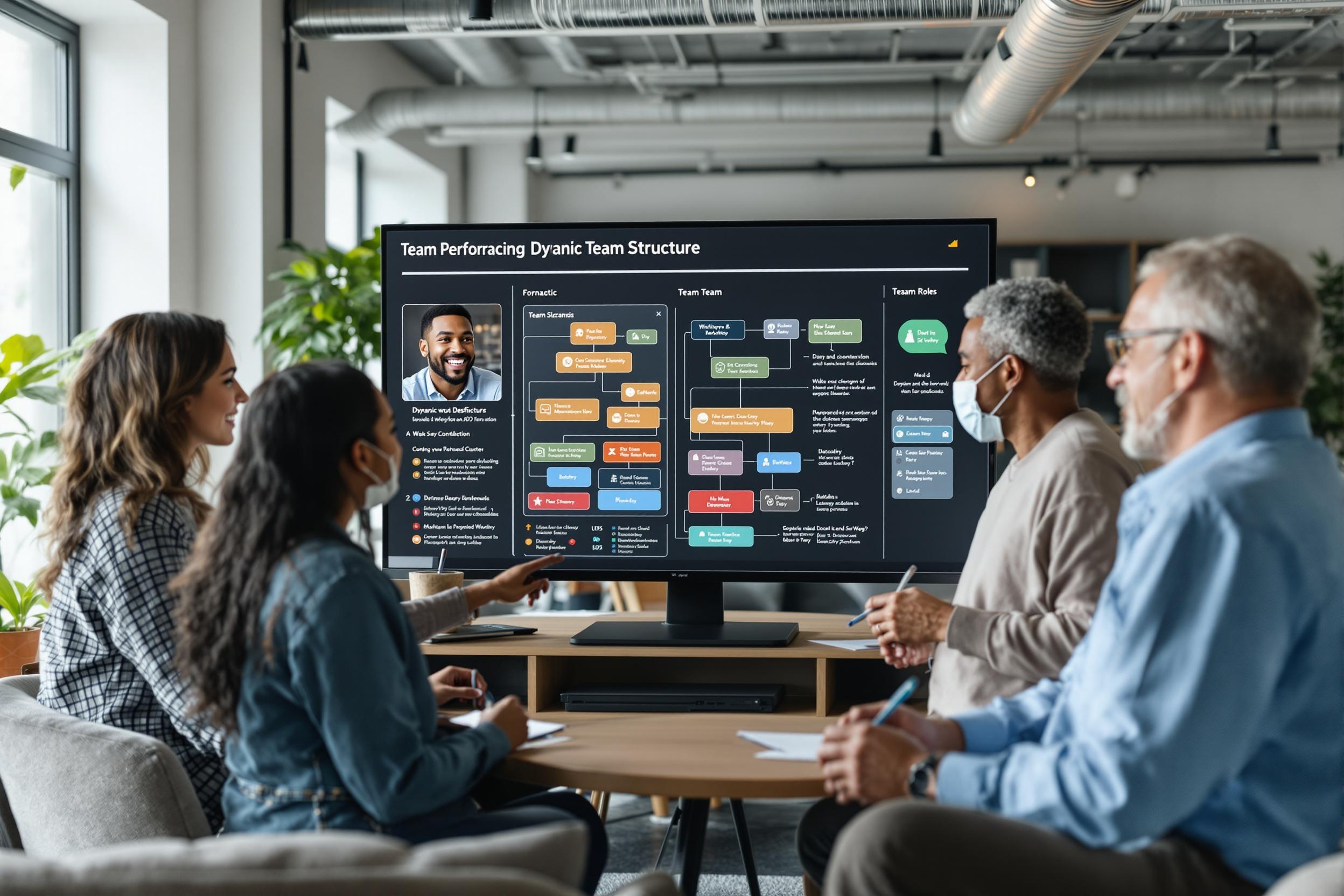Key Takeaways
Distributed work is a permanent model in Germany, with nearly 25% of employees participating and 84% reporting higher productivity.
The biggest challenges in a hybrid team (humans and AI agents) are communication gaps, maintaining engagement, and the risk of proximity bias favoring in-office workers.
Defining clear roles and responsibilities is the most effective way to combat distributed work challenges, boosting both performance and morale.
The shift to a hybrid team (humans and AI agents) model is more than a trend; it's a permanent fixture in the modern workplace, with 75% of managers in Europe having already adopted it. Yet, this new freedom often brings new friction. Teams are the heroes of today's businesses, but they're battling the villains of change fatigue and digital overload. The secret weapon in this fight is clarity. By redesigning your team's structure with clear roles and responsibilities, you empower them to conquer chaos and find their flow. This is where teamdecoder comes in, the effective tool for Team Architects ready to build the high-performing, resilient hybrid team of the future.
Practical Framework for Team Architects
As a Team Architect, you can apply these principles to your organization:
- Map Current State: Document existing roles and responsibilities using a tool like teamdecoder.
- Identify Gaps: Where are roles unclear? Where do humans and AI agents overlap?
- Define Clear Boundaries: Specify which tasks are handled by humans vs. AI agents.
- Create Accountability: Assign clear decision rights for each role.
- Iterate and Improve: Continuously refine based on team feedback.
The Hybrid Hit: Why Remote-Flexible Work Is Here to Stay
These examples show that with the right tools, you can achieve measurable improvements in efficiency and team morale. A clear structure is essential for effective team workload planning.
Make Bots and Humans Click: Integrating AI into Your Hybrid Team
The highest-performing hybrid team is a partnership between humans and AI. AI excels at handling repetitive, data-heavy tasks, which can boost productivity by up to 40%. For example, AI-driven tools can transcribe meetings, manage schedules, and even analyze workflows to suggest improvements, saving up to 100 minutes per employee per week. This frees up your human team members to focus on what they do best: strategic thinking, creative problem-solving, and building relationships. The key is to define clear roles for both humans and AI. Think of AI as a new team member. What are its responsibilities? Who does it report to? By clarifying the human-AI handoff, you create a seamless workflow. This approach to AI agent integration is fundamental for the future of office collaboration. This ensures that technology empowers your team, rather than overwhelming them.
Try teamdecoder for free - shape your team and make change feel like play!
More Links
German Federal Statistical Office provides statistics and information related to work from home in Germany.
Statista offers statistics, data, and market information related to remote work.
German Federal Ministry of Labour and Social Affairs provides recommendations for hybrid screen work.
Fraunhofer IAO presents a study on the return to the office versus distributed work models, offering current and differentiated answers.
Bertelsmann Foundation has published a report on the future of work.
German Society for Personnel Management (DGFP) shares a press release regarding a Fraunhofer study on work and organizational topics.
KPMG issued a press release stating that CEOs expect a return to the office in the next 3 years.
FOM University of Applied Sciences offers a working paper on knowledge transfer in hybrid teams (humans and AI agents).
FAQ
What is a hybrid team (humans and AI agents)?
A hybrid team is a flexible workforce model where some employees work on-site in a central office, while others work remotely from different locations. This model is now used by 75% of managers in major European economies.
How can I improve communication in my hybrid team?
Improve communication by establishing clear protocols for different types of information (e.g., using chat for quick updates and email for formal announcements). Utilize collaboration tools effectively and ensure all meetings are inclusive for remote participants. Documenting roles and responsibilities also reduces communication friction.
What is the role of a Team Architect?
A Team Architect is anyone responsible for designing and building effective teams. This includes founders, managers, HR business partners, and consultants who define roles, responsibilities, and workflows to optimize for clarity and performance.
Can teamdecoder help with AI agent integration?
Yes, teamdecoder allows you to map out roles and responsibilities for your entire team, including AI agents. You can define what tasks the AI is accountable for and clarify the handoff points between bots and humans, creating a clear, efficient distributed workflow.
Is there a free version of teamdecoder?
Yes, you can start using teamdecoder with a free plan to map out your team structure, define roles, and improve clarity. This allows you to experience the benefits before committing to a paid plan.
How does teamdecoder support organizational development?
teamdecoder supports organizational development by providing a dynamic, visual platform to manage team structures. It helps during restructuring, scaling, and transformation by making it easy to model changes, identify gaps, and ensure everyone is aligned with the new strategy.





